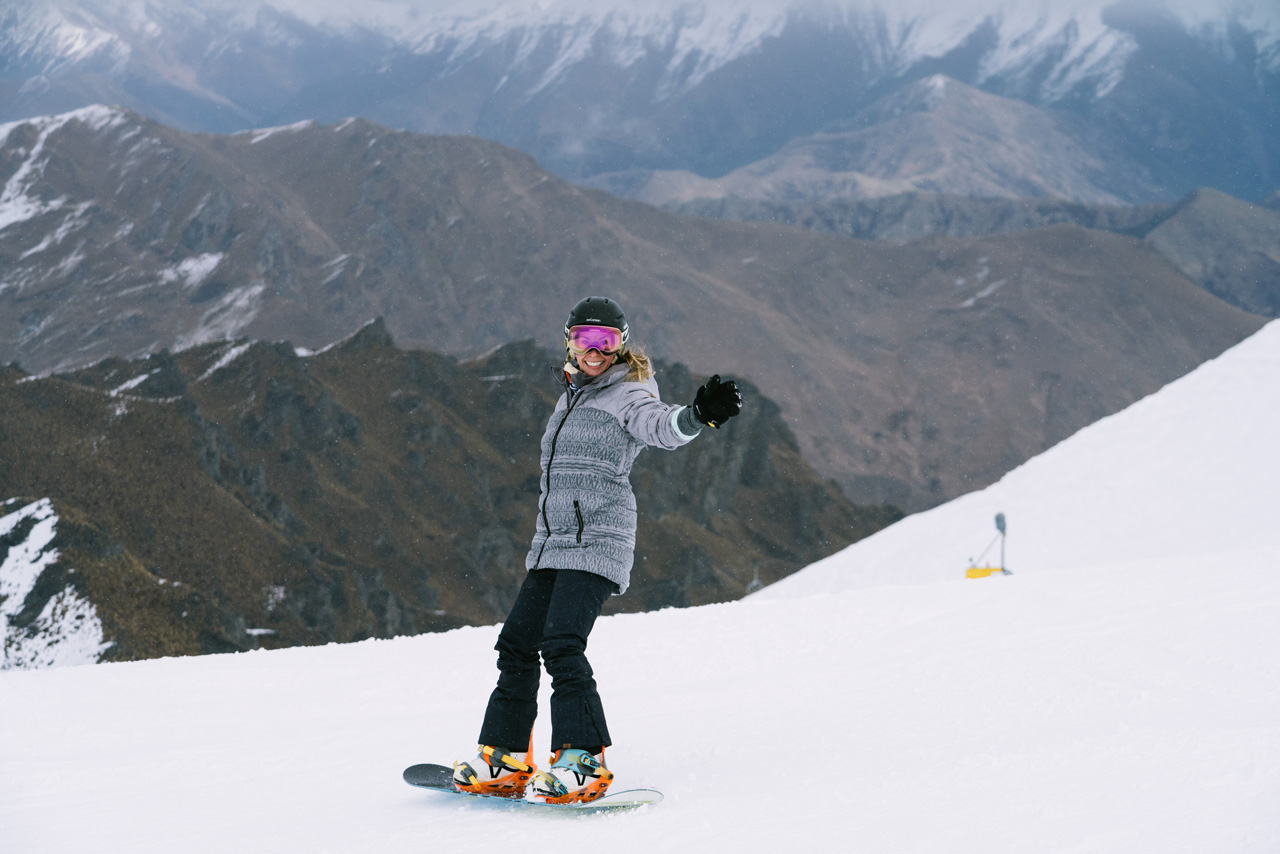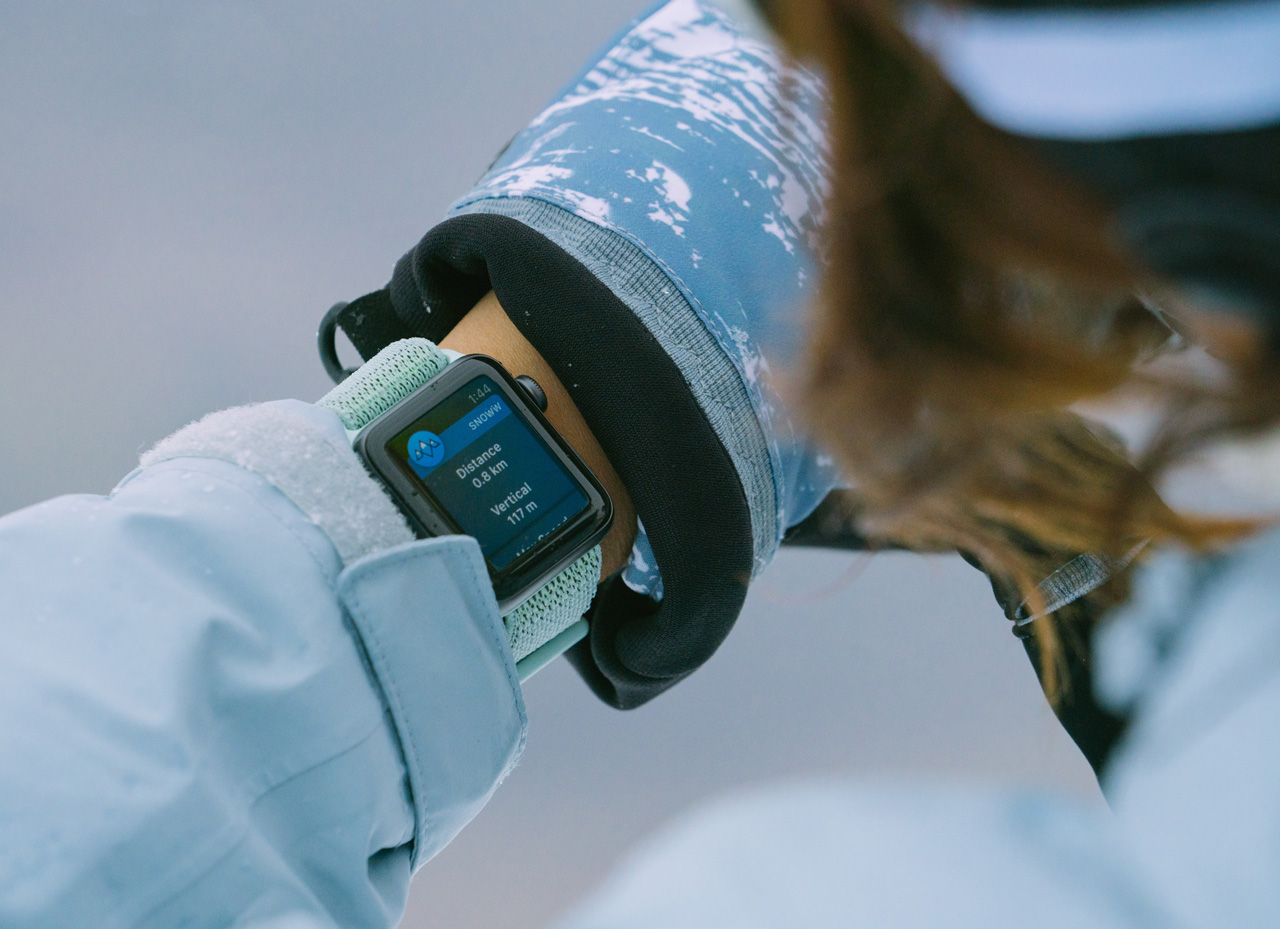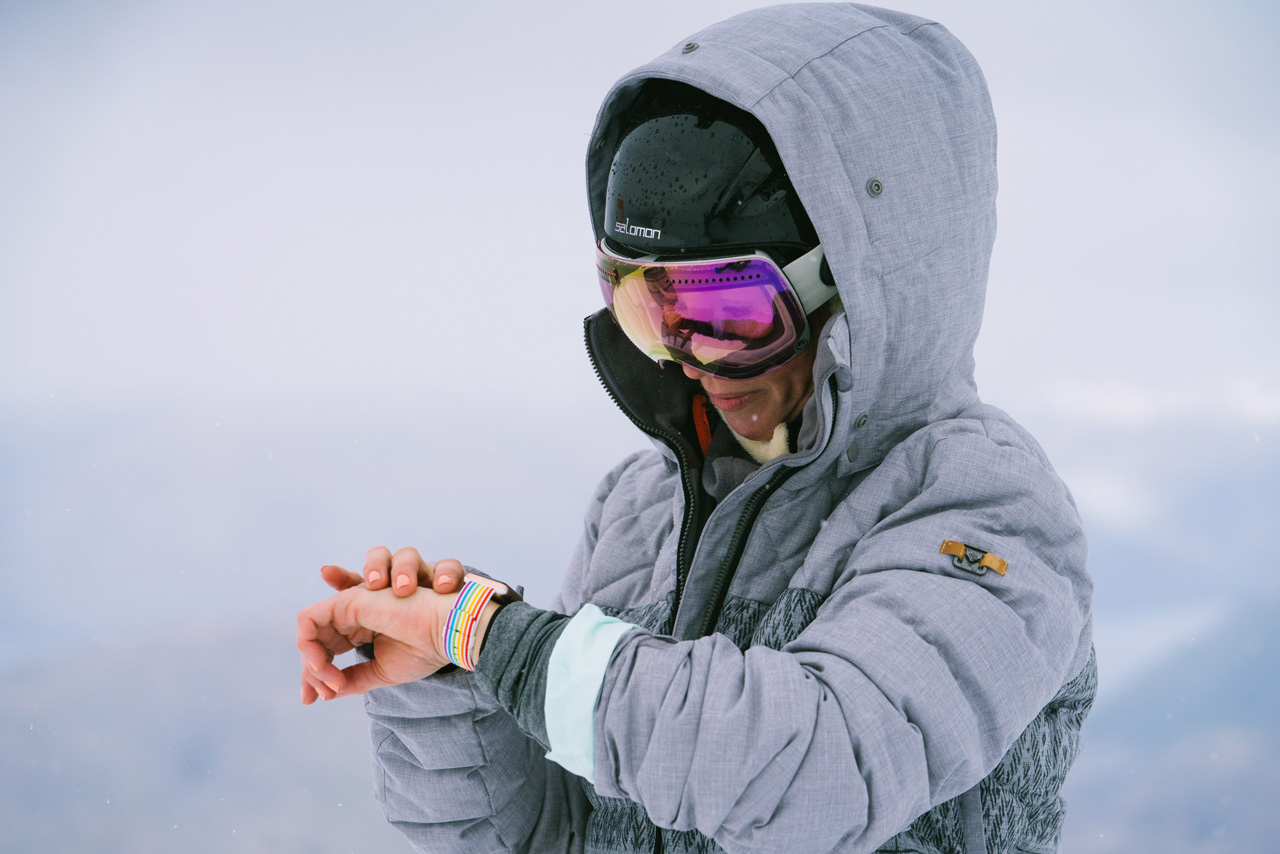News feed
Ask any avid snow-goer what their three biggest irritates are on the mountain and they’re pretty likely to be these, in no particular order: major crowds, losing your crew and the annoying gloves-off, gloves-on game every time you want to check your phone or shuffle music.
While there’s not a whole lot we can do about the former (especially on the Australian ski fields), Apple’s just served up a wrist-sized solution to the latter two. Last week the tech giant, which recently became the America’s first trillion-dollar company, unveiled a new feature on its latest model Apple Watch Series 3 introduced specifically for snow sports via the OS 4.2 software update.
While the smartwatch’s ability to measuring speed, heart rate and the location is nothing new, the watch can now sense altitude (as in height) via an altimeter. In a front-foot move, Apple released this fresh tech to App developers some time ago to allow them to integrate it into their platforms before the launch (more on those below). The end result? You can accurately measure everything from your maximum or average speed, total distance and calories burned after each run or day on the snow. It even knows if you’re sitting on a chairlift or resting rather than moving.
I had the express pleasure – snow lift pun intended – of giving new Apple Watch feature and partner snoww app (free on iTunes) a literal test run during a recent trip to Coronet Peak in Queenstown. As an avid snowboarder for the past 20 years, there’s not an on-snow joy or hassle I’ve not experienced. I just didn’t expect one tiny device to make such wild improvements to the whole mountain experience. Here are the four ways it most impressed me.

- You can bask in the glow of your hard stats at the end of the day.
Whether you’re looking for some bragging-rights fodder during that end-of-day Apres session, or just appreciate a new way to chart your personal progress each day, this feature is everything.
As mentioned, I’ve boarded since my teens in a dozen different countries. The only thing I’ve ever been able to measure until now is the number of hours between my first and last run of the day. This time, using a user-friendly app developed by British ski enthusiast Eddy Healy called snoww, I was able to capture all sorts of impressive data – like the fastest speed I went all day (for the record, 49 km/hr), distance I covered (15.7km), average speed and total time on the mountain – with one press of a button at the start of the day. While snow is packed with plenty of other lit features, this one’s the most widely appealing.
Sixteen-year-old New Zealand Olympic Freeski halfpipe bronze medallist Nico Porteous, who has tried both the Apple Watch 3.0 and snoww app, told me this tech has been a game-changer for him. In the past, he’s had to resort to things like a speed radar gun (as in the kind police use) to capture his speed during training. “We’ve never had technology like [this] in ski training,” he says. “Now, when I go up the mountain with my Apple Watch on, I can track my heart rate and speed when I’m going into jumps, which is hugely beneficial because I can see how hard I’m working and focus on the technical aspects of my skiing.”
While I’m unlikely to be training for an Olympic halfpipe competition any time soon, there’s nothing like seeing your speed or distance after a great run to amp up your self-competitive edge. Better still, you’re comparing yourself with your crew. Slowest speed picks up the bar tab…

- You’ll Never lose your friends mid-run again.
On the subject of a crew, therein lies the second – and in my opinion – most amazing feature of this on-snow GPS tech as it’s used by the snoww app in particular. If I had a dollar for every minute I’ve waited around at the bottom of a slope for friends or partners I’ve lost mid-run, neon outfit or not, I’d be rich enough to board Aspen every season for life.
Now, you can create groups in snoww, much as you would a Facebook or WhatsApp group, then see one another’s locations at any time on a map that pops up on your watch. A virtual reality version of this is on the horizon too, according to Healy, who has shown me the beta test version of his ‘find a friend’ in-app idea. Soon you’ll be able to see a photo-like 3D picture of the mountain around you on your device – much like the VR version of Pokemon if you’ve ever played it – with an arrow pointing toward your friend’s location and numbers telling their distance and altitude away.
“We’re thrilled what Apple Watch Series 3 allows us to build for our passionate snow sports audience,” said Healey of the app, which also lets you share stats and photos with your friends. “We designed snoww thinking about quick interactions and glances while out on the mountain so these updates have helped us make it easy to record accurate, relevant metrics as well as create a fun and social experience for our users.”

- You can leave your phone and music player at home
If your Apple Watch has a red dot on its crown then it’s capable of communications, whether your iPhone is nearby or not. This means no more worries about smashed screens in jacket pockets after big falls or taking off (slash losing) gloves on chairlifts so you can use your phone. You can take and receive calls on your watch, as can you answer texts and check notifications. Siri’s at hand (again, pun intended) to help with the above.
Ditto if you’re anything like myself and vastly prefer to ski or board with music. I created a snowboarding playlist on my phone the evening before, then streamed it through my watch and Apple AirPods while on the snow. No earphone cords, no hassle, and again, no need to get my phone out to scroll through my music, change volume or pause when chatting to neighbours on the lift.
- It’s the most stylish calorie counter you can wear.
Looking for a way to justify that third mulled wine at the bar after sundown? Using all the aforementioned new sensor tech and inbuilt heart rate monitor, you can track how many calories or kilojoules you’ve burned. This date can then be saved on your iPhone via the Health app or as credit in the Activity Rings feature that’s been a huge hit with fit-savvy Apple Watch owners since day one. The watch can even tell when you’re sitting on a lift or resting at the top of the mountain. (Shivering still burns calories, right?)

PS. FOUR AWESOME SNOW APPS YOU CAN USE WITH YOUR APPLE WATCH
snoww: Spelled with a double ww, this is a social ski tracking app that allows you to follow friends and compare vital ski/snowboard statistics or compete with other skiers/snowboarders to climb your way to the top of the mountain’s leaderboard.
Slopes: Track your edge and relive your best days with Slopes. Whether you’re at a local resort or deep in the Alps, Slopes gives you all the bragging rights you need about your days hunting fresh powder. Track speed, vertical, distance, lift vs trail time, and more, all while going easy on your phone’s battery.
SNOCRU: This award-winning ski and snowboard tracking app, connects skiers and snowboarders to the mountains on all levels and tracks your stats from your day on the slopes.
Ski Tracks: Ski Tracks is used by millions of skiers and snowboarders around the world. It’s sophisticated but simple to use and designed to get your ski stats to you instantly. With its low power and data requirements, you will be able to record and enjoy long days on the slopes.










